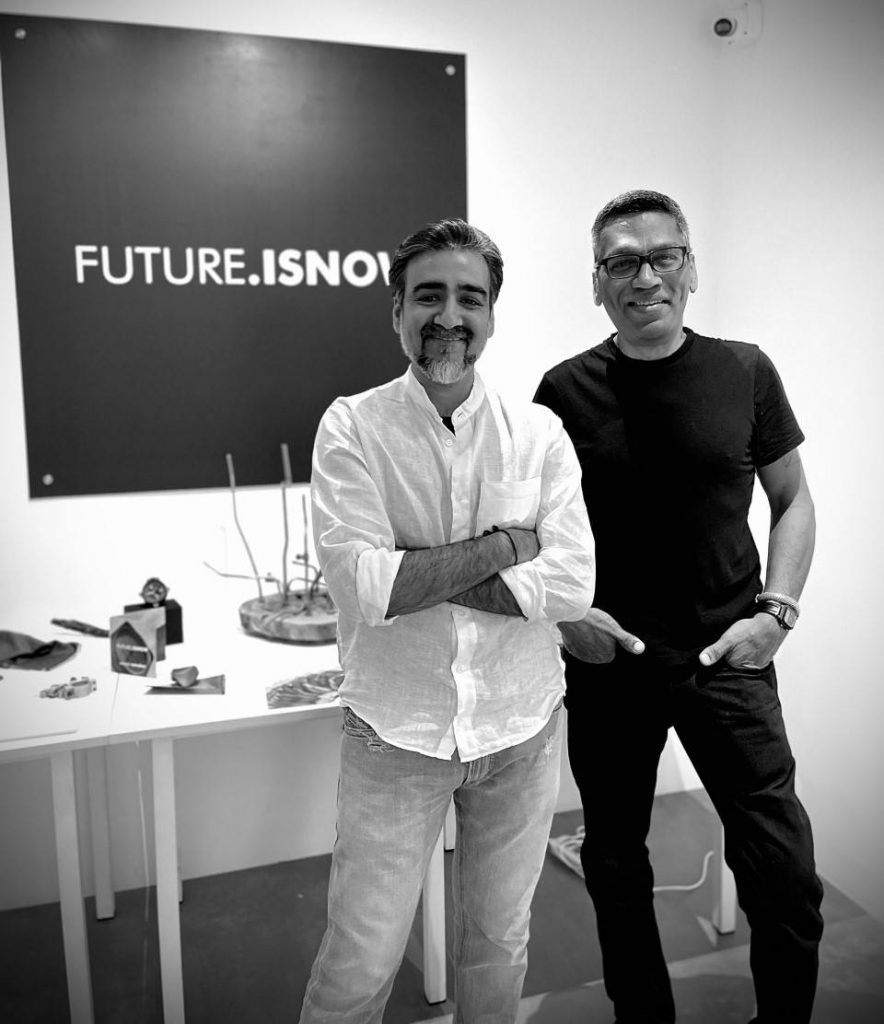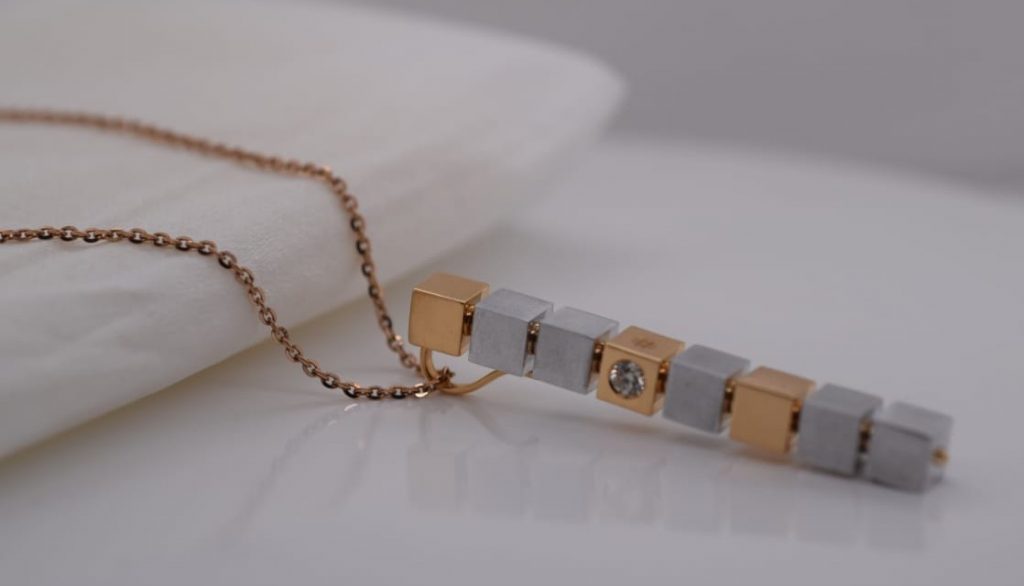In an age where the ecologically conscious tribe is growing rapidly, luxury brands are experimenting and innovating ways to create lines that are more environmentally friendly and encourage mindful consumption. Enter Shourai (Japanese for future), the collection deftly combining aluminium retrieved from discarded aircraft and recycled gold. The understated but sophisticated line has been co-conceptualized and created by high-end jewellery brand Moksh and architect and industrial designer Satyajit Vetoskar of Bandit.
The Shourai collection was unveiled at Baro Market in the quaint heritage village Kotachiwadi in Mumbai in early June.
Upmarket and upbeat, the minimalist pret staples are patterned with tiny cubes of 18-karat textured gold and treated aluminium displaying admirable geometry. Some pieces also get an added glint of sparkle with the inclusion of ethically sourced diamonds. The bottom line: an aesthetically matched marriage between precious and non-precious metals does not make a piece of jewellery any less luxurious or coveted. And Shourai is one such example.
“At Moksh, while most of our lines are derived from Indian art and architecture, the underlying spirit is to break away from the establishment in some ways,” explains Milan Chokshi, Founder, Moksh.
“For far too long, jewellers have felt compelled to associate themselves with provenance, inspiration, gemstones, legacy, etc. Moksh has always been contrarian in its approach. We focus on good design, and working with Satyajit of Bandit, gave us an opportunity to explore the other end of the spectrum with regard to design. While one end of our spectrum is elaborate and detailed, Shourai is simple and efficient – yet both are engineered with the same principles of comfort and balance. And the same conscientious, intelligent customer would be our muse for both the diverse lines.”
Satyajit Vetoskar spoke to Solitaire International about the concept and the challenges that went into creating this novel collection.
What made you decide on making jewellery from discarded aluminium of aircraft?
As a founder of the sustainable design brand, Bandit, I have been experimenting with various reclaimed/recycled materials to create bags and other products. It was a chance meeting with a friend, who repaired smaller aircrafts, that led to the idea of using aluminium. After many visits to his factory and further leads to a larger aircraft junkyard, I got hooked onto working with aluminum scrap.
It was around the same time that Moksh had approached me to design a jewellery collection for them. I was intrigued by the idea of creating a sustainable jewellery line and also using contrasting materials such as aluminium and gold to complement each other.
How long did it take for you from ideation to conceptualization to develop a line?
The sourcing of the aluminium took the longest time; and we took about 8 months from the ideation to manufacturing the collection.
Why did you choose Moksh to manufacture the line?
We have been associated with Milan Chokshi, Founder of Moksh for over two decades, having designed their stores, branding and packaging.
When the idea of designing a new eco-friendly jewellery line came up, Milan agreed right away.
The entire team at Moksh was not only excited to work on such a unique combination of materials, they were also willing to take a risk in creating a line which was non-traditional. Their expertise in creating fine jewellery and the eagerness of their craftsmen to work on making something different made the job a lot easier.
Tell us about the challenges of working with aluminium and then using it along with gold
The concept of using aluminium and gold together was a crazy combination. These materials are diametrically opposite not just in value but in physical and chemical compositions as well. Hence to make a design which would celebrate and complement both these materials was in itself a big challenge.
The other big challenge was to introduce sustainable design in jewellery, which was addressed in various ways – like using reclaimed aluminium, reused gold melted from old ornaments. The sustainable design is built for ease of manufacture, hence ensures lesser time for craftsmanship, lower energy consumption, and lesser waste. The packaging, too, is also made from recycled paper, again in the shape of a cube.





